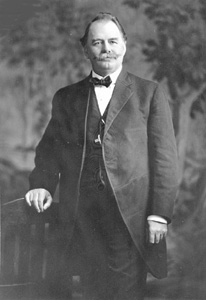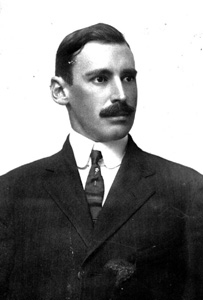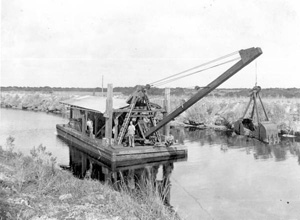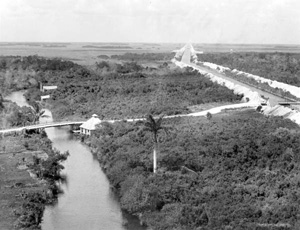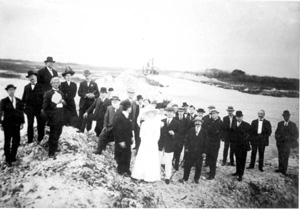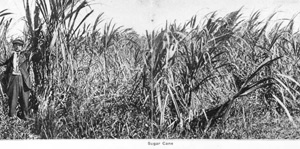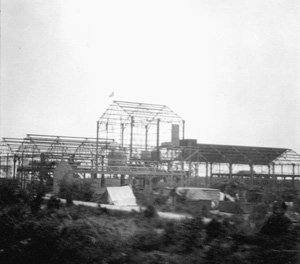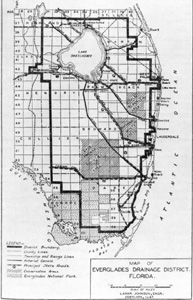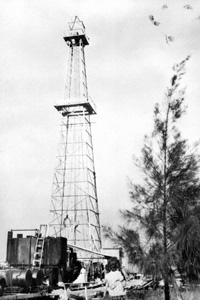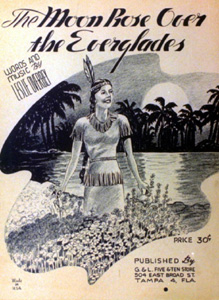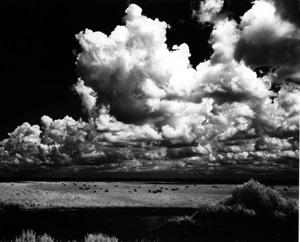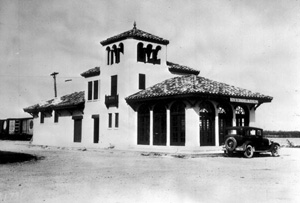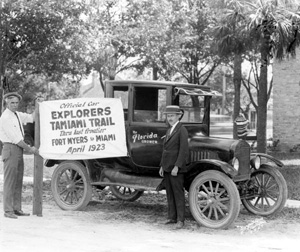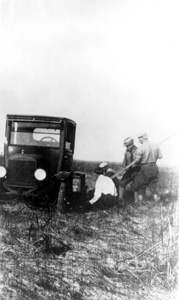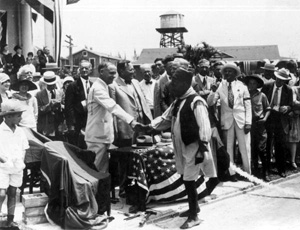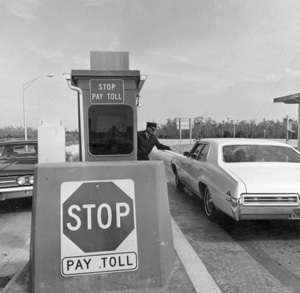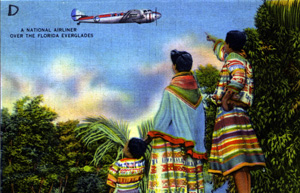Photo Exhibits
Photo exhibits spotlight various topics in Florida history, and are accompanied by brief text intended to place selected materials in historical context.
The Everglades in the Time of Marjory Stoneman Douglas
Governor William S. Jennings (c. 1901)
Image Number: N027126
The Everglades were seen in the early 1900s as "waste land." But some, such as Jennings, believed that the area housed valuable farmland - if it was drained of its water.
He began a decades-long process of draining the Everglades to expose that land, which also cleared the way for the development and urbanization of South Florida.
Jennings served as Florida governor from 1901 to 1905. His successors followed his drainage policies.
Chief Everglades drainage engineer Fred C. Elliot (1912)
Image Number: N042560
Everglades drainage and dredging (1920s)
Image Number: RC05514
Reclaiming the Everglades (1912)
Image Number: RC06109
Reclamation was the term used for the "recovery" of farm land by draining the water out of the Everglades.
Pictured is the Miami River beside a human-made drainage canal.
Former Governor Jennings with press tour of the Everglades drainage project (1907)
Image Number: RC12548
Back row from l to r: Sherman Bryan Jennings (governor's son), former governor William S. Jennings (1901-1905), William Jennings, Bryan, and May Mann Jennings.
Man in front left holding white hat: Tom Watson; 6th man wearing boller hat and goatee: Richard Bolles; 11th man with long beard: Hugh Taylor Burch.
Sugar cane grown in the Everglades of Broward County (ca. 1917)
Image Number: PR01180
For more on sugar cane and the Everglades, see the film clip from Everglades Harvest.
Sugar mill in Everglades, Florida (1922)
Image Number: PR05022
Map of Everglades drainage district (1947)
Image Number: PR06644
Over 50% of the Everglades was drained in the first half of the 20th Century.
Oil well on the Dade-Collier County line (1943)
Image Number: GE1634
Sheet music for "The Moon Rose Over the Everglades"
Image Number: PR08082
Aside from its role in Florida agriculture, by the 1920s, the Everglades was also a force in the popular culture.
The composer of the picture sheet music was Leslie Overbey.
Cattle grazing in the Everglades (1960s)
Image Number: RC13971
Cattle ranching has been practiced in Florida since the 1500s.
With its flat topography and abundant grasses, the Everglades and surrounding lands have long been utilized by ranchers.
Atlantic Coast Line Train Depot in Everglades, Florida (1930)
Image Number: N030417
The town of Everglades was founded by Baron Collier, who hoped developers and newcomers would settle in the recently drained land of the Everglades.
He also promoted the building of roads and other methods of transportation to and through the Everglades.
Tamiami Trail blazers (1923)
Image Number: RC04681
One of the most touted transportation innovations was the Tamiami Trail, designed to connect Miami and the East Coast with Fort Myers and the West Coast.
The road, funded by several parties including Collier and the State of Florida, bisected the Everglades. It was a 30-foot high earthen structure that altered the natural flow of the Everglades.
The Trail Blazers were the first to drive through the unfinished road as a way to promote the trail.
The Blazers on the unfinished portion of the Tamiami trail (1923)
Image Number: RC01597
The trail blazers drove seven model T Fords, a commissary truck, and a new Elcar. Only the Model Ts survived the expedition.
Town of Everglades Celebrating the completion of the Tamiami Trail (1928)
Image Number: RC01673
Toll booth station on Alligator Alley (1969)
Image Number: C673628
This was a second and more widely used roadway through the Everglades.
Postcard of an airplane flying over the Everglades (1952)
Image Number: PC0058D

 Listen: The Assorted Selections Program
Listen: The Assorted Selections Program